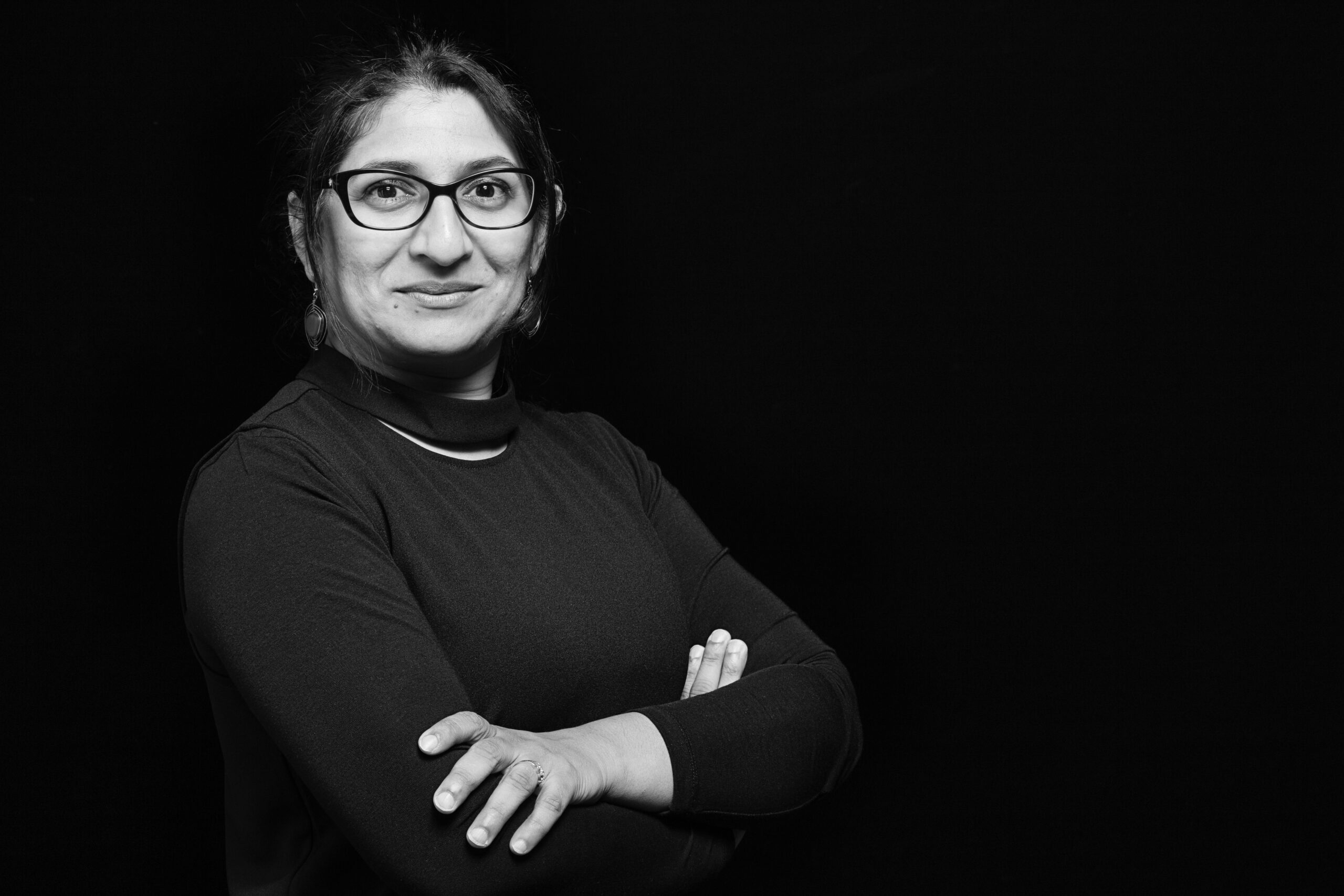
Scanning Sites with Remote Sensing Technology
Taubman College faculty are bringing transformative technology to U-M through an innovative academic-industry partnership.
Associate Professor of Architecture Robert Adams and Lecturer Dawn Gilpin are collaborating with FARO Technologies, a global leader in 3D digital measurement and developer of the 3D Terrestrial LiDAR Scanner. They co-direct the Empathy in Point-Clouds Scan-Lab, which uses FARO equipment to scan critical sites, including landscapes and buildings.
LiDAR, or light detection and ranging, is a remote sensing technology that uses laser scanners to create high-precision 3D models of buildings and environments. The partnership with FARO Technologies provides the core infrastructure for the Scan-Lab.
Michelle Edwards, director of global services at FARO Technologies, says the partnership empowers “the next generation of architects and researchers to explore new frontiers in 3D documentation and spatial analysis.” Gilpin says that the LiDAR scanner collects “millions of points in minutes” to produce a high-resolution photorealistic 3D point-cloud, creating a precise digital twin of any space. LiDAR also allows the architect and contractor to validate construction processes to detect if anything was installed incorrectly so they can review the exact time and date when the error occurred to determine what needs to be done to repair it. “It’s a highly effective technology for architecture, engineering, and construction,” Gilpin says.
Adams explains that compared to conventional survey methods, using LiDAR to scan a site saves about 90% of the time in the field, reduces errors, and provides more valuable, accurate data. “Today, LiDAR scanning is like when Google Earth evolved into Google Maps and Street View through aerial surveys and panorama photography,” he says. Gilpin says it’s a useful platform for producing videos and spatial narratives to communicate the story of the site in ways that deepen empathy and understanding.
Gilpin teaches a course called Point-Clouds and Unreal Worlds, which introduces students to advanced techniques in 3D laser scanning and photogrammetry integrated into the gaming software Unreal Engine for immersive storytelling. Gilpin introduces students to the FARO scanner in the field and teaches them how to synthesize 3D data for visualization using FARO Scene software. “The FARO/U-M partnership has accelerated our research and provides engaging educational opportunities for our students,” Gilpin says.
Scanning technology is expensive. Cynthia Radecki, Taubman’s assistant dean for advancement, worked with FARO Technologies to secure an 18-month contract valued at $120,000. The contract includes a scanner, software, and training toolkit for certifying 30 students. This enables students to gain “job-ready skills in an emerging market that’s really blowing up,” Radecki says.
The FARO/U-M partnership launched in February 2023 at the former Packard Automotive Plant in Detroit, where historic buildings are being demolished. Adams and Gilpin worked with FARO experts to develop a preservation strategy using the FARO scanner to create a digital twin that preserves a digital record of the structure.
Adams and Gilpin are developing a similar strategy in collaboration with the Saginaw Chippewa Indian Tribe of Michigan to survey the Mt. Pleasant Indian Industrial Boarding School, which existed from 1893 to 1934. Adams says that the school was part of a “federally sponsored program to erase indigenous culture, language, and rituals by forcibly removing Indigenous children from their homes and indoctrinating them into a White authoritarian patriarchal system of education.” He calls it a “genocide,” in which over 200 children died, were murdered, or disappeared. Given the traumatic history, the Saginaw Chippewa Indian Tribe of Michigan wants to share the story with the public. Adams and Gilpin are creating a digital twin of the site, which will integrate archival photos and oral histories to honor survivors.
With funding support from the University of Michigan Humanities Collaboratory, Adams and Gilpin will travel with their research team to Mexico City this summer to develop a survey of a UNESCO World Heritage Site at Teotihuacán. The U-M team will work with Sergio Gómez Chávez at the Instituto Nacional de Antropología e Historia; he is an internationally renowned archaeologist who discovered a tunnel revealing 300,000 ritual and ceremonial artifacts. This project will launch a three-year funding effort to bring this discovery to a global audience.
Adams says that the partnership with FARO Technologies has particular value in making archaeological sites and works of architecture that are often difficult to access accessible to a broader public, especially for people with disabilities. Though people may not be able to visit the site, they can navigate the 3D model online and “experience it in an immersive digital environment.”
Gilpin adds that technology allows students to have an immersive experience of the space instead of relying solely on orthographic drawings and photographs. Teaching best practices on the LiDAR scanner and expanding design education so students can learn more about the stories of the site “is really promising in terms of expanding the education of an architect and therefore the discipline.”
— Julie Halpert
Portico: Spring 2024
- Cultural Immersion, Catalyst for Growth
- A Kaleidoscopic Career
- Hungry for Change
- Community Conversation: Coming Together for the Common Good
- Scanning Sites with Remote Sensing Technology
- Placemaking and Bridging Communities









